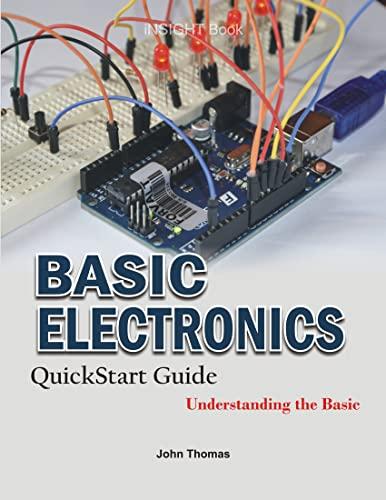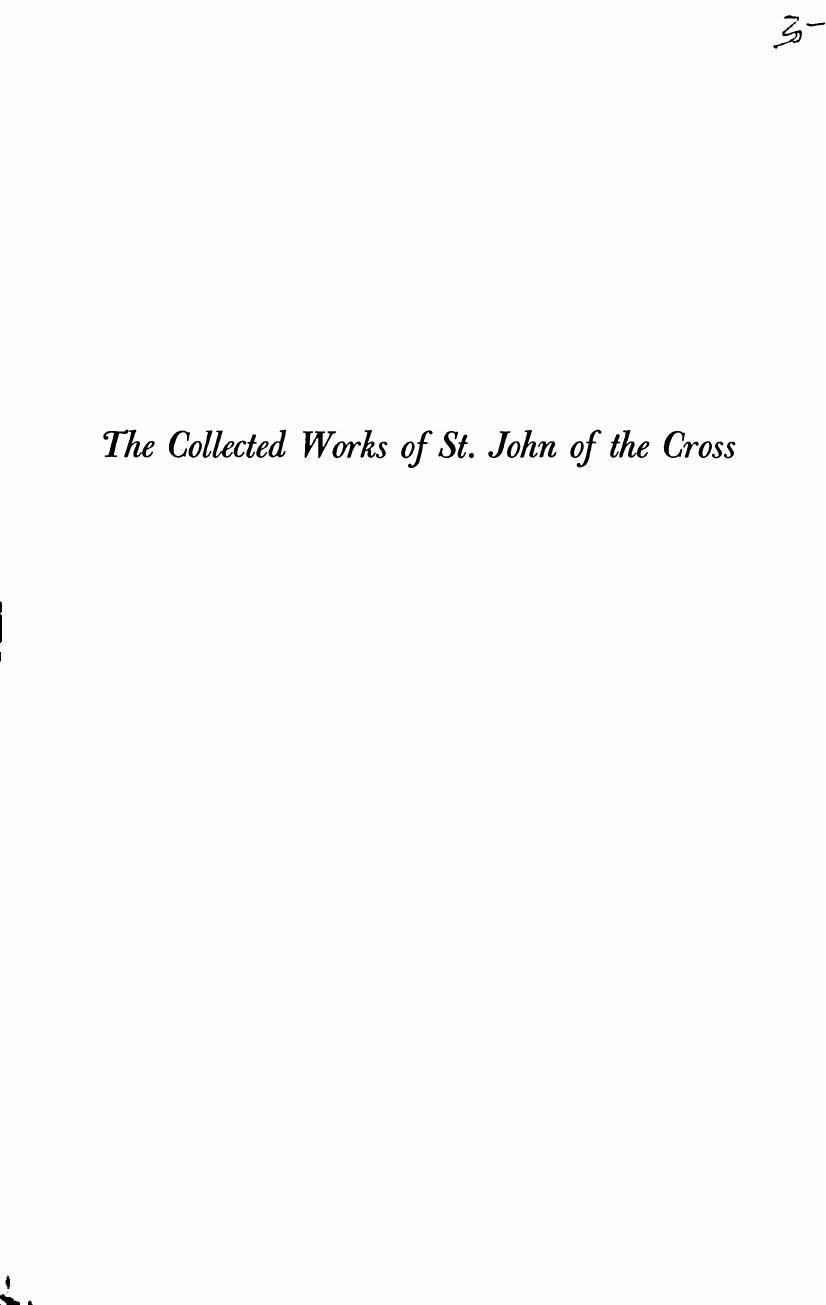FOREWORD
The expression ‘material logic,’ used in the title of this book, is uncommon and paradoxical. Few logicians would hes¬ itate to say that all logical problems are problems of form and that there is no room in logic for the consideration of any matter. But if such is the case, the common use of the expression ‘formal logic’ has to be accounted for. Unless some part of logic is not formal, to speak of formal logic seems to involve absurd redun¬ dance. We might speak of symbolic algebra if there were such a thing as a nonsymbolic algebra, but because all parts of algebra are symbolic, the expression ‘symbolic algebra’ sounds nonsen¬ sical. The formal character of logic should rule out the expres¬ sion ‘formal logic’ just as the symbolic character of algebra rules out the expression ‘symbolic algebra.’ Here are logicians to whom the notion of material logic is entirely foreign: from what do they intend to distinguish what they call formal logic?
In the usage of these logicians and in the common usage of our time, ‘formal logic’ is not meant to distinguish one part of logic from another. Rather it is meant to distinguish, at the cost of redundance, logic itself from the inquiries described as ‘theory of science,’ ‘scientific method,’ ‘critique of scientific knowledge,’ ‘epistemology,’ etc. These unscrupulous neighbors of logic are not concerned with logical entities but with a universe of things and real relations; yet they are called by some, with no claim to rigor in the choice of words, ‘logic of science,’ ‘applied logic,’ etc. Redundance is welcome if it serves to remove the threat of confusion between logic and these ill-defined disciplines.
Formal logic is universally held to deal with consistency alone. Let us, accordingly, approach the problem of material logic as follows: Should it be said that when the rules of consist¬ ency are established the task of logic is over and the possibil¬ ities of logic exhausted? Beyond consistency there is truth. No matter how rigorous our inferences, we fall short of truth if our
principles are false, we fall short of certainty if our principles are uncertain, we fall short of understanding if our principles are devoid of explanatory power. It is certainly reasonable to ask whether, beyond the rules of consistent reasoning, any part of logic deals with the attainment of these scientific perfections: truth, certainty, and explanation.
To this question the vast majority of logicians answer in the negative. For them, the contribution of logic to the scientific ideal ends with the valuable achievement of strictly consistent inference. Any further achievement would be by the sciences themselves. “Whether the premises be true or false,” Augustus De Morgan wrote, “is not a question of logic, but of morals, philosophy, history, or any other knowledge to which their subject-matter belongs: the question of logic is, does the conclu¬ sion certainly follow if the premises be true?” (Formal Logic, London, Taylor and Walton, 1847, p. 1). Along the same line, Abraham Wolf wrote, about a century later, logic is the study of valid inference, not true inference. This is not because logic is not interested in truth, for its own function is to explain the true conditions of valid inference. It is simply a case of that division of labor which necessity has forced upon all the sciences. The study of the conditions of valid inference means the study of the general relations between inferences and prem¬ ises. This is a sufficiently important task by itself. The study of the conditions of true inference would mean, in addition, an investigation into the truth of all possible premises—an obviously impossible task.” (“Logic,” Encyclopaedia Britannica, 14th ed.)
To take a simple example, logic may define a type of inference based upon the transitivity of a relation; but in the argumenta¬ tion, 'Chicago is north of St. Louis and St. Louis north of New Orleans, therefore Chicago is north of New Orleans,’ logic will not let me know whether Chicago is in fact north of St. Louis and St. Louis north of New Orleans. The truth of the conclusion ‘Chicago is north of New Orleans’ depends upon facts known to geography and foreign to logic.
Logic cannot say what city is north or south of what city; more generally, logic knows nothing about things. But things admit of more than one way of existing. Over and above the pri¬ mary existence that they enjoy in nature, things enjoy, as objects
of understanding, a new existence—objective, intelligible, inten¬ tional—which brings forth in them a new system of properties. The object of logic is constituted by the properties which accrue to things by reason of the new existence that they enjoy as objects of the human mind. In opposition to the real properties or ‘first intentions’ of things, these logical properties are called ‘second intentions’ in scholastic language. The laws of second intentions are the rules of reasoning, and the art of reasoning is the same as the science of the second intentions.
From all this, it results that there is no such thing as a material logic if second intentions concern exclusively consistent inference. In other words, there is no such thing as a material logic if all laws of second intentions are merely rules of consisttency. But if there are, within the broad field of the second intentions, properties placed beyond the achievement of consist¬ ency—i.e., properties whose laws concern the truth of our argumentations, their certainty, and their explanatory powerthen there is such a thing as a material logic. No part or function of logic will ever decide whether a particular proposition, relative to the real world, is true or not. But logic may be able to say what general conditions an argumentation must satisfy in order to be not only consistent, i.e., formally perfect, but also demon¬ strative. Material logic is a possibility if and only if some second intentions are so constituted that their laws be the rules of scientific demonstration.
Suppose three consistent argumentations of the same formal type—say, three syllogisms in Barbara. One conclusion is false, one probable, and one scientific. Such diversity derives from diversity in the matter or content since, by hypothesis, the form is the same. At this point, the problem of material logic can be stated in entirely definite terms. Considering the matter or content which grounds the diversity of false, probable, and scientific argumentation, the question is to determine whether this matter or content is constituted by real properties alone, or also comprises logical properties. Once more: Considering the diversity of content which, within the unity of a single form (Barbara), divides argumentation according to falsehood, prob¬ ability, and scientific certainty, the question is whether such diversity is merely one of first intentions or involves both first
and second intentions. If the content which distinguishes the three argumentations as false, probable, and scientific is alto¬ gether reducible to first intentions, then there is no such thing as a material logic. If all questions of content are to be decided, like the question whether St. Louis is south of Chicago and New Orleans south of St. Louis, by inquiry into the real world, then logic is concerned with consistency alone and whatever perfection of discourse lies beyond consistency is the business of partic¬ ular sciences. If, on the contrary, diversifying contents involve also a diversity of second intentions, then there is such a thing as a material logic.
The Posterior Analytics of Aristotle are an inquiry into logical matter. This treatise considers the intentions which distinguish scientific argumentation from consistent reasonings devoid of scientific character. To be sure, logical matter, in relation to the real content of science, retains the nature of a form. In a comparison between logic and the sciences of the real, the whole of logic is formal. But over and above the rela¬ tion of form to matter which obtains between logical science and the science of reality, a comparison between the parts of logic reveals a further relation of form to matter according as a second intention concerns mere consistency or the scientific perfections of truth, certainty, and explanation. The law that a syllogism of the second figure must necessarily comprise one negative premise concerns consistency and pertains to formal logic. Whether the premises are false, probable, or certain makes no difference: if the middle term is twice predicate and if both premises are affirm¬ ative, nothing follows.
The Prior Analytics deal with such problems and the Posterior Analytics start where the Prior leave off. A past master in prioristic analysis-i.e., in the theory of consistency-if he never studied demonstration would lack logical instruments of decisive significance. In order to achieve scientific quality in my discourse about the real world, in order to obtain the highest degree of intelligibility in my dealing with things, I need famil¬ iarity with such logical intentions as primacy and immediacy, essential universality, essential connection, the modes of perseity, strict appropriateness, logical priority and posteriority, a priori demonstration and a posteriori demonstration, [xii]
demonstration of fact and explanatory demonstration, etc. Such second intentions, which do not regard the consistency of reasoning but its scientific perfection, constitute the subject of the Posterior Analytics. Among all the logical works of Aristotle, the climax is this treatise of material logic. Why, then, are Aristotle and his followers so commonly reputed to have constructed a logic purely formal in character? Among others, Mr. Bertrand Russell wrote: “Logic, in the Middle Ages, and down to the present day in teaching, meant no more than a collection of technical terms and rules of syllogistic inference.”
To account for this legend, we may observe, first, that the Posterior Analytics are a book of extreme difficulty. Whereas the formal logic of Aristotle has been explained in countless digests, some of which are both exact and relatively easy to read, his material logic is not readily accessible in secondhand exposi¬ tions.
Further, and more importantly, the reduction of logic to the treatment of consistency alone is a stubbornly recurrent accident originating in the sociology of knowledge. At all times the behavior of scientific men betrays willingness to make sacrifices for the sake of communication, intersubjectivation, and consensus. Such sacrifices may affect the very structure of science, as when modern physicists restrict themselves to those aspects of nature which can be expressed in “sharp statements.” But, independ¬ ently of what happens to the sciences themselves, it seems that the instrument of science, viz., logic, should also be the instrument par excellence of scientific communication. And thus logicians are led to think and to dream of a logical system inde¬ pendent of philosophic controversy, indifferent to the subjects that cause conflicts among philosophers, acceptable to the most diverse schools of philosophy, valid for the Platonist, the Aristotelian, the materialistic nominalist, the nominalistic rationalist, and the pragmatist as well.
Now it soon becomes evident that not all parts of logic lend themselves equally well to abstraction from philosophically controversial issues. The problem of the relation between logic and philosophic controversy can be outlined as follows:
1. Any question of logic, if treated with the depth and
* Bertrand Russell, Our Knowledge of the External World (Chicago and London: Open Court Publishing Company, 1929), p. 35.
[xiii]
thoroughness required for greatest intelligibility, involves issues on which philosophers are divided.
2. On the level defined by merely utilitarian concern for safely working rules, it can be said, roughly, that formal logic, or an important part of it, admits of abstraction from philosophic controversy.
3. In material logic, rules are so closely bound up with their foundations that abstraction from philosophic controversy is alto¬ gether impossible.
Accordingly, a program of logic free from philosophic con¬ troversy will restrict itself to problems of form. Further, in the treatment of these problems it will shun inquiries into foundations and, generally, be not too particular about the intelligible estab¬ lishment of its own rules. It is often possible to propose con- \ vincingly a rule of consistency without unfolding the ultimate reasons of its validity. Diversity regarding the justification of the rule proves compatible with common adherence to the rule itself—just as the ethical precept that one ought not to kill is commonly adhered to by the eudaemonist, the Kantist, the utilitarian, etc., though their reasons for not killing are diverse.
Take, for instance, the rule that in a syllogism of the second figure one premise must be negative: it is interpreted by the Aristotelian in terms of universal wholes and by the nominalist in terms of sets, and subsets, and members of a set or of a subset. Such diversity corresponds to very profound differences with regard to the most basic problems of metaphysics. Yet, this rule of the second figure is a subject and an instrument of agreement between the Aristotelian and the nominalist. Leaving aside the metaphysical issues, it is possible to achieve some common understanding of many rules of formal logic. Though utilitarian and shallow, this common understanding may by establishing a clear framework for discussions play a considerable role in the communication of knowledge. But the problems of truth, certainty, and intelligible necessity which material logic considers cannot be isolated from the subjects of philosophic controversy. Treated aside from philosophic controversy, material logic would hardly make any sense at all.
Logicians who want to avoid philosophic controversy must ignore material logic. So far as the sociology of knowledge is
concerned, the situation of the material logician is much the same as that of the metaphysician. Both need the very particular kind of fortitude that it takes to live by rational evidence, with little or no support from society, in the midst of never-ending opposition. Wherever logic is principally regarded as an instru¬ ment of discussion and communication, material logic is likely to decline. Only a short time after the death of Aquinas, the Logical Treatises of Peter of Spain supplied schoolboys with a manual of logic from which posterioristic analysis is entirely absent. The maintenance and development of Aristotle’s material logic were tasks for such geniuses as Cajetan and John of St. Thomas.
In the work of Aristotle, the division of logic into formal and material is drawn with entire clarity so far as reasoning is concerned. But his treatises on apprehension and judgment do not express, by their divisions, the distinction of a form and a matter within logic. Thus On Interpretation considers both such formal properties of propositions as universality and particularity (chap. 7) and such material properties as necessity and contin¬ gency (chap. 9). In most logical works patterned after the Aristotelian Organon, formal and material standpoints are distin¬ guished only in the treatment of reasoning. John of St. Thomas, on the contrary, interprets all three operations—apprehension, judgment, and reasoning—in terms of logical form and logical matter. Considering, however, that for the logician, the first two operations of the mind are subordinated to the third, it is easily seen that this division pertains by priority to reasoning. Inten¬ tions belonging to terms or propositions are considered formal or material according as they are preparatory to the consistency of reasoning or to its demonstrative power. The relevance of the division of logic into formal and material is indirect in the case of the first two operations. Where relevance is but indirect, lesser clarity should be expected. In fact, the reasons why a problem pertaining to the first or second operation is treated in formal or in material logic are not always obvious and may not always be certain. Thus, John of St. Thomas places in material logic the problem of unity and diversity in the meaning of terms. No doubt, the treatment of this problem is, in several respects, [xv]
preparatory to the theory of demonstration; but it is equally clear that without firm notions on univocity, equivocity, and analogy we are apt to break the first law of syllogistic validity, viz., that there be no more than three terms in any categorical syllogism. Further, the distribution of subjects in the two main divisions of the Logical Art may occasionally be influenced by pedagogical considerations. In scholastic language formal logic is also called ‘minor’ logic and material logic ‘major’ logic. But ‘minor’ does not only signify that formal logic is shorter, and ‘major’ that material logic is longer. It is understood that minor logic is the' kind of logic that can be taught to beginners—students have to begin with formal logic anyway-and major logic the kind of logic which presupposes a background and consequently can be taught only to advanced students. Hence a tendency to place in material logic all questions particularly deep and difficult, even though it may not be entirely clear that they concern the demonstrative power of argumentation more essentially than its formal validity. The same pedagogical concern accounts for the fact that reflec¬ tion upon logic itself, which, in an Aristotelian and Thomistic vision of the sciences, belongs not to logic but to metaphysics, is placed in the opening section of material, or major logic. * * *
The general pattern of Aristotle’s Organon can be described in terms of a polar opposition between dialectic on the one hand and on the other hand analytic and science. This opposition, however, must remain subordinate and can never be allowed to grow into a picture of final disunity.
Aristotle’s notion of dialectic admits of several approaches and can be defined in several ways. It seems that dialectic is primarily a rational system whose principles are not rational necessities but common opinions. Science, on the other hand, is a rational system whose principles are axioms, i.e., propositions endowed with rational necessity and evidence. In lieu of axiomatic truth, dialectic depends upon the verisimilitude, the probable truth of propositions accredited by their success in the society of thinking persons. Dialectic is a sociological sub¬ stitute for science. In it the real content is never certain-or, if it happens to be certain, it is so for reasons extraneous to [xvi]
dialectic. Nothing is certain in dialectic except the logical arrangement of objects and signs. The dialectician knows nothing scientifically except second intentions. And yet he talks of real things, nay, of all sorts of things. The logical forms of his art organize a real matter supplied, under conditions of prob¬ ability, by the authority of all men, or of most of them, or of all experts, or of most of them, or of the most famous of them. The dialectician can afford not to be a specialist: all that is certain in his art concerns second intentions, and these are general in character. The real content of dialectic is also general in character, though in an altogether different sense, since it is made of opinions commonly received among men. Because the principles organizing the dialectical art and constituting all the certainty found in it are logical, the logician, and no one else, constructs dialectical systems and writes books of dialectic.
Historians and interpreters of logic have not given enough attention to the dual capacity of the dialectician. A treatise of dialectic comprises a system of logical propositions designed to get the best out of opinions commonly received in such domains as physics, ethics, or politics. It is also supposed to comprise an orderly collection of these commonly received opinions. The logician, as dialectician, trespasses the borders of the logical. He has much to say about real things, in his own tentative, talk¬ ative, unfinished, and uncertain style. Whenever the work of a logician comprises a dialectical section, we expect to find, framed in a logical system, an inquiry into real being. In fact John of St. Thomas has written no dialectic. But his extensive treatment of the categories involves a reinterpretation, in an analytical context and for analytical purposes, of material originally destined to supply the dialectician with a general knowledge of reality. As a result of this reinterpretation, the Logical Art of John of St. Thomas contains much philosophy of nature and much metaphysics.
In so far as it is directed toward analytic and science, logic does not have the same reason for inquiring into the world of reality. The analytician is not, like the dialectician, an ambig¬ uous personage. He is all concerned with logical properties: real properties are taken care of by another person, viz., the scientist. In analytic, the treatment of logic, both formal and material, can [xvii]
afford to be pure. But care for logical purity cannot hinder the logician’s quest for a deep understanding of his own objects. Because the second intentions are founded upon the first, the intelligibility of logical entities, directly or indirectly, flows from the intelligibility of things. (As shown in the foregoing, this is why divergencies in the philosophy of the real are inev¬ itably paralleled in logic. Again, the logical consequences of philosophic positions are more evident as the logician goes more deeply into the explanation of logical properties and rules.) The foundationsof the logical world are aspects of the real world,’ both physical and mentaE These aspects of nature and of the soul concern logical research intrinsically, and there is no a priori restriction on the volume of real inquiry which will be needed in order to achieve satisfactory explanation of even the most familiar of logical objects.
To sum up: although the object of logic is entirely constitut¬ ed by second intentions, there are two reasons why discourse about real being should appear in the works of a logician. In so far as logic is influenced by the purposes of its dialectical part, the logician discourses about the real because dialectic is ambiguous and comprises a real content. In so far as logic is influenced by the purposes of analytic and science, the logician discourses about the real because the explanation of logical intentions requires such discourse. Besides these two reasons, which are essential, a purely accidental factor deserves to be mentioned. Occasionally, the temptation to digress about in¬ teresting issues accounts for the consideration of real subjects in a logical context. John of St. Thomas, a metaphysician and theologian much interested in reality, and a teacher always gen¬ erous with his time, is not immune to this temptation. But his frequent inquiries into the real world are motivated and vindica¬ ted, in the vast majority of cases, by his search for thorough explanation of logical properties. These properties are so related to nature, to the world of the human soul, and to the metaphysical universe that an exposition of logic centered about the explanation of logical properties inevitably develops into a general introduction to philosophy.
The author of the Logical Art, John Poinsot, was a [ xviii ]
contemporary of Descartes. Contrary to popular belief, there still was, in this late phase of “decadent scholasticism,” one man of genius among the so-called scholastics. But if we are to call him a ‘scholastic philosopher,’ let us bear in mind a properly restricted notion of scholasticism. Not so long ago, it was commonly assumed that there had existed a unified system ot thought which could be designated as “scholastic philosophy.” True, men whose mental habits had been formed by the reading of Plato, Descartes, Leibnitz, Hume, Kant, and J. S. Mill could not help detecting a family resemblance in St. Anselm, St. Albert the Great, St. Thomas, Scotus, Ockham, Suarez, and a few others. Through improved acquaintance with the history of medieval thought, we now know that there has never been such a thing as a unified system of scholastic philosophy. A dozen or more phil¬ osophic doctrines, which are sharply at variance with each other, would have an equal right to be called scholastic: this makes it nonsensical to predicate ‘scholastic’ of any philosophy or doctrine. It is possible to speak of a scholastic period in the history of thought, in spite of inevitable vagueness in the defini¬ tion of such a period. But the word ‘scholastic’ is predicated more relevantly of a certain language, of a certain method, and of a certain set of problems—what the Germans call Problematik. There is no unified scholastic doctrine or philosophy, but there is such a thing as a scholastic set of problems. Both with regard to language and to Problematik, John of St. Thomas remains a scholastic. In spite of his chronology, Galileo and Descartes are unknown to him. His uneventful life was, for the most part, spent in schools dedicated to scholastic problems and regrettably closed to the great scientific novelties of the Renaissance.
A member of the Dominican order and a professor at the cel¬ ebrated University of Alcala de Henares, John Poinsot (15891644)—called John of St. Thomas because of his devotion to St. Thomas’ doctrines—left a monumental work comprising a Course of Philosophy and a Course of Theology. The Course of Phi¬ losophy fills three thick volumes in modern editions, the Course of Theology ten. John of St. Thomas belongs to the line of St. Thomas’ great commentators; Cajetan is one of his most respected authorities. His expositions are parallel to basic works—treatises of Aristotle in the Course of Philosophy, Summa theologica of St.
[ xix]
Foreword
Thomas in the Course of Theology— but he does not use the meth¬ od of the textual commentary. Most sections of his Courses begin with a sharp summary of a text; then, the main issues are dis¬ cussed in extensive dissertations. Sometimes these dissertations follow each other so continuously as to make up a complete and strongly organized treatise. But John of St. Thomas considers that the requirements of completeness and continuity in exposi¬ tion are met by basic texts and textual commentaries. He does not feel obliged to treat all questions normally included in a curriculum. His task is to explain—leisurely, patiently, thor- ' oughly, and with unique skill in the selection and multiplication of standpoints—a restricted number of wonderful questions.
We do not need to elaborate on the reasons why the integral translation of a work which fills 839 two-column pages in the latest edition was held impossible. Since a choice had to be made, we turned to the field of material logic, where the shortage of great books is particularly felt.^ But no more than about threefifths of John of St. Thomas’ writings in material logic could be included within reasonable space limits. Our choice was gov¬ erned by both doctrinal and pedagogical concerns. We made it a rule never to abridge an exposition having the character of a whole. Our shortest units are long articles. In several cases, our unit is a whole “question.” On the subject of demonstration, it is the whole set of “questions” corresponding to the Posterior Analytics.
Whoever is aware of the situation of logical studies in our time knows that the most vexing of our problems is the problem of logic itself. Accordingly, much space is given to the issues concerning the object and nature of logic (I). The problem of the universal (II) is obviously of central significance for all logic and for the philosophy of knowledge. The “antepredicamental” discussions (III), consisting principally of an inquiry into anal¬ ogy) constitute a masterly contribution to the theory of meaning.
tMuch of the doctrine contained in John of St. Thomas’ formal logic is available in the Formal Logic of Jacques Maritain. The Short Treatises which, from a pedagogical standpoint, constitute the core of John of St. Thomas’ teaching in formal logic, have been translated by Francis C. Wade under the title of Outlines oi Logic (Milwaukee: Marquette University Press, 1955).
Foreword
The doctrine of analogy presented here is the subject of further developments in the articles on the division of being into catego¬ ries (IV). The long study of the first four categories (IV) is a store of elaborate information on concepts basic in all parts of philosophy and in the interpretation of the sciences. From a cer¬ tain standpoint, the pages on quantity and on relation can be considered supplementary to the introductory pages on the object of logic. Taken together, these three sections present much material and many precise instruments for the improvement of our ideas on the relations between the logical and the mathematical sciences. Section V is concerned with four timely issues: sig¬ nification, the relation of knowledge to actual existence, reflec¬ tion, and formalization. Lastly (VI) we present without any omission John of St. Thomas’ treatment of demonstration and science.
A scholastic language is spoken on the campus alone and never in the market place. A vernacular, i.e., a language spoken in the market place, can be successfully translated into another vernacular; but the translation of a scholastic language into a vernacular is an enterprise whose difficulties are not always surmountable. Intense and luminous life may find expression in scholastic language; however, the intellectual life that a scholas¬ tic language succeeds in conveying is marked by austerity even in its phases of abundance. In vernacular translations, such austerity may look stiff. These general difficulties are complicat¬ ed here by a disposition related to John of St. Thomas’ best ped¬ agogical qualities. A very patient teacher does not have much time left to polish his style. John of St. Thomas is capable of sharpness and beauty in expression, but he often writes in the uninhibited style of a teacher who depends confidently upon friend¬ ly communication with eager scholars. In many cases we have had to reshape clauses, to divide exceedingly long sentences, to modify the order of phrases, and effect other changes, on the same minor scale, for the sake of better readability. We believe that accuracy has never suffered in the process. In so far as the subject matter admits of anything like ease, we would not hes¬ itate to say that John of St. Thomas reads easily when familiarity has been achieved with his vocabulary, his style, and his way of approaching questions, considering and reconsidering them with indefatigable zeal. It is the privilege of a patient teacher to
become less and less difficult to follow as the work of teaching goes on.
From a philosophic standpoint, one major characteristic of our time is a deepened split between man’s concern for mystery and the forms of scientific thought. Referring to well-known propositions of Maritain in A Preface to Metaphysics, let us say that a question can be predominantly a problem or predominantly a mystery. A problem is a question the true answer to which leaves no room for further elaboration. Descartes was praising the handiness of problems when he pointed out that a child who has performed a multiplication according to the rules of arith¬ metic knows as much about the product as any mathematical genius in the world. But a mystery is a question of such char¬ acter that an answer unqualifiedly true and sound and appropriate not only admits of but also urgently demands further inquiries into inexhaustible intelligibility. The mystery aspect predom¬ inates in religion, in metaphysics, in philosophy generally, and in human affairs. The problem aspect predominates in the dis¬ ciplines called the sciences by common usage, in techniques, and generally in the fields where the pattern of positive science exercises a strong influence. Interest in philosophy, religion, theology, human sciences, and humane studies is no less today than in celebrated periods of intellectual greatness. But it is impossible not to be struck by a widespread aversion to scientif¬ ic forms in philosophy, theology, and human affairs-briefly, in the realms characterized by the predominance of mystery. What is most alive in the logical movement of our days is directed toward a universal and thorough problematization of science. True, the rigor achieved in the scientific handling of purely prob¬ lematic questions is one glorious aspect of intellectual life in this century. At the same time a sense for mystery is not lacking, it is incomparably more profound in our contemporaries than it used to be in the golden age of rationalistic optimism—say, from the time of the Encyclopedic to the great terrors of the twentieth century. What is lacking in our relation to mystery is neither earnestness nor abundance of ideas, it is the rigor of the scientif¬ ic spirit. There are things which will never be accomplished by [xxii]
Foreword
“the tragic sentiment of life,” “immersion in history,” expe¬ rience of death,” ‘esprit de finesse,* “cultural refinement,” “esthetic sophistication,” “our cultural heritage,” etc. Those things are clarity in the statement of questions and principles, firmness in inference, rational evidence of conclusions, appro¬ priateness in predication, integral preservation of past devel¬ opments, lucid order, and the unique defense against error that rational forms alone can provide. The ambition to explore sci¬ entifically the realms where mystery predominates receives little encouragement from the most up-to-date of our logicians. Some of them would say that one major merit of their work is precisely to have demonstrated the meaninglessness of metaphysical ques¬ tions, and more generally of questions concerning what we call the realm of the mystery.
Let it be remarked, at this point, that the scientific type borne in mind by a logician exerts influence upon the factual product called a system of logic. This does not express an essen¬ tial necessity, such things happen because our energy is exhaust¬ ible and our versatility limited. The logic of Aristotle is not exactly what it would have been if his scientific patterns had not been Greek geometry, an imperfectly disontologized mathematical knowledge, and a physics that was not disontologized at all. With the great abundance of metaphysical and theological genius which marks the work of St. Thomas and his commentators, the scientif¬ ic patterns used by the logician change somewhat. Indeed, for St. Thomas and John of St. Thomas, mathematics-principally rep¬ resented by Euclidean geometry-remains the best approximation to unqualifiedly scientific knowledge and consequently the pat¬ tern which the analytician bears in mind. But when logicians are so ardently interested in philosophy, they cannot omit the logical problems of particular relevance for the explorers of philosophic mysteries. A clear example of such concern is the treatment of analogy in the Logical Art. Here, the logician answers a ques¬ tion asked by the metaphysician with burning anxiety, for the an¬ swer will decide whether metaphysical and, more generally, philosophic issues are meaningless or not. An inspiring and charming teacher, John of St. Thomas remains among us the logician who understands best the scientific ideal of the phi¬ losophers. Yves R. Simon
ACKNOWLEDGMENTS
We wish to express our gratitude for the very generous help given us in the long and difficult task of translating these Basic Treatises. We received all possible encouragement from the three institutions represented in our team: the University of Chicago, the University of Notre Dame, and Barat College. Special acknowledgments are due to the Committee on Social Thought of the University of Chicago. The Fund for the Advancement of Education (Ford Foundation) has also been of assistance in granting one of us a faculty fellowship for personal research.
Professor James A. Anderson, Mr. Robert Bunker, and Mr. John Tich have played important parts in the finishing phases of our project. The secretarial work was done, with much patience and dedication, by Miss Gloria Falco, Miss Mary Corbett, Mrs. William Burke, Mr. Carl E. Mueller, Mr. Carl Allen, and Mr. Edward Menard.
Thanks to the courtesy of the Marietti Publishing Company, we have been allowed to use the index of their edition of John of St. Thomas’ Course of Philosophy.










